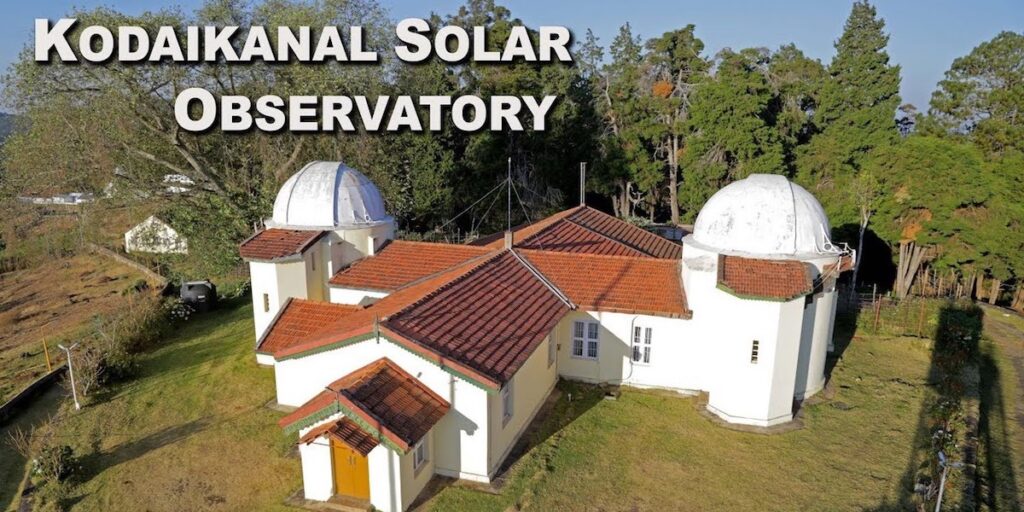Kodaikanal Solar Observatory Digitized Data probes Suns rotation over the Century, paving way to predict solar cycles

Indian Scientists from Kodaikanal Solar Observatory have estimated how Sun has rotated over a century. Kodaikanal Solar Observatory is located in Palani range of hills in Tamil Nadu.
This estimation would help study magnetic field generated in the interior of the Sun, which causes sunspots and results in extreme situations like the historical mini-ice age on Earth (absence of sunspots).
It could also help predict solar cycles and their variations in the future.
The Sun rotates more quickly at its equator than at its poles. Over time, the Sun’s differential rotation rates cause its magnetic field to become twisted and tangled. The tangles in the magnetic field lines can produce strong localized magnetic fields. When the Sun’s magnetic field gets twisted, there are lots of sunspots.
Sunspots, which form at the surface with an 11-year periodicity, are the only route to probe the solar dynamo or solar magnetism inside the Sun and hence measure the variation in solar rotation.
Sunspots are areas that appear dark on the surface of Sun as they are cooler than other parts of Sun’s surface. They are formed at areas where magnetic fields are particularly strong which keeps some of heat within Sun from reaching surface. Since they increase and decrease through an average cycle of 11 years, called Solar cycles.
Sunspots are studied because magnetic field lines near sunspots often tangle, cross, and reorganize which causes a sudden explosion of energy called a solar flare.
Solar flares release a lot of radiation into space which can interfere with radio communications on Earth.
Solar flares are sometimes accompanied by a coronal mass ejection (CME), which are bubbles of radiation and particles from Sun. CME can have a major effect on radio communications, auroras, Global Positioning Systems (GPS) connectivity, power grids, and satellites etc.
The study at Kodaikanal Solar Observatory was done by researchers led by Mr. Bibhuti Kumar Jha, a Ph.D. student from the Aryabhatta Research Institute of Observational Sciences (ARIES), an autonomous institute under Department of Science and Technology (DST), Govt. of India, along with the collaborators from Max Planck Institute for Solar System Research, Goettingen, Germany and Southwest Research Institute, Boulder, USA.
They have studied the solar rotation by tracing sun spots from century-old digitalized films and photographs. In the process, the old films and photographs that were taken at the Kodaikanal Solar Observatory (KoSO) of Indian Institute of Astrophysics (IIA), an autonomous institute of DST, and have now been digitised.
The team compared the consistent digitized data with manual data of rotation taken earlier and said that they have been able to differentiate the behaviors of the bigger and smaller solar spots for the first time.
Such digitized data and differentiation of bigger and smaller sun spots can improve understanding of solar magnetism and sun spots, paving the path towards predicting solar cycles in the future.



